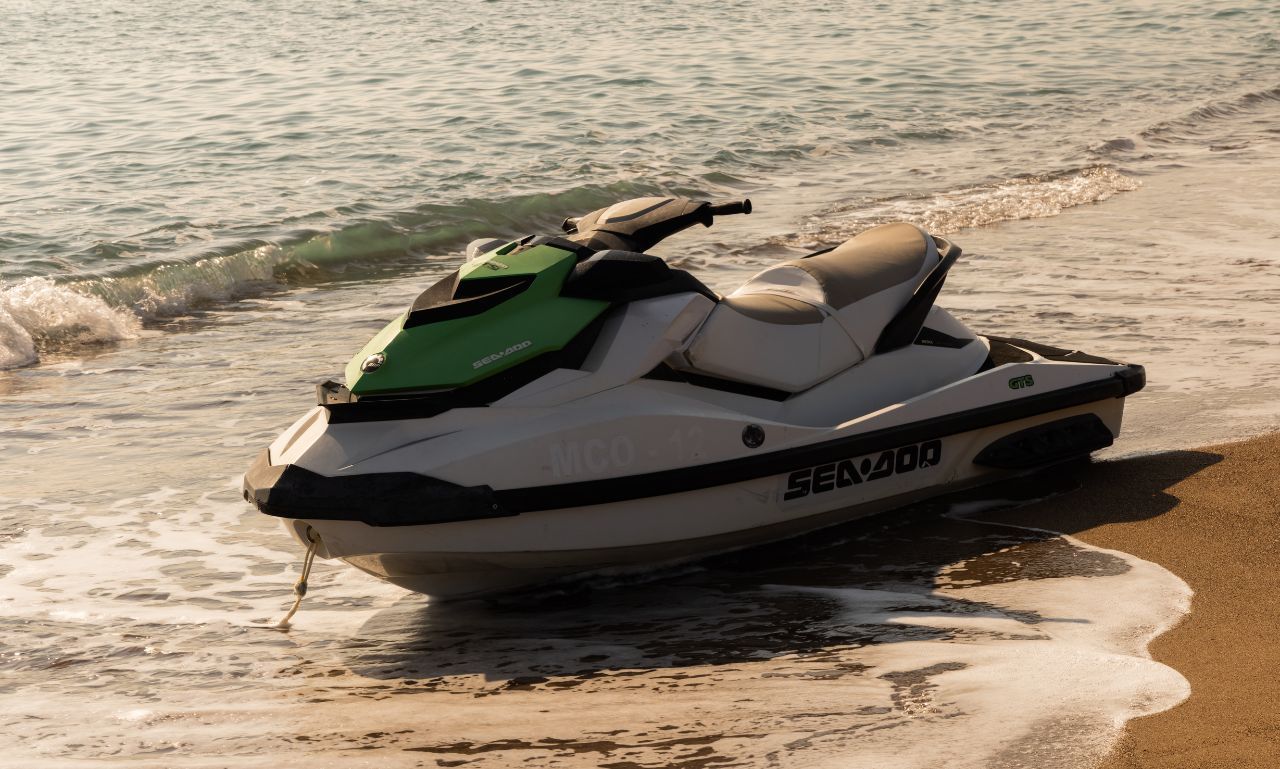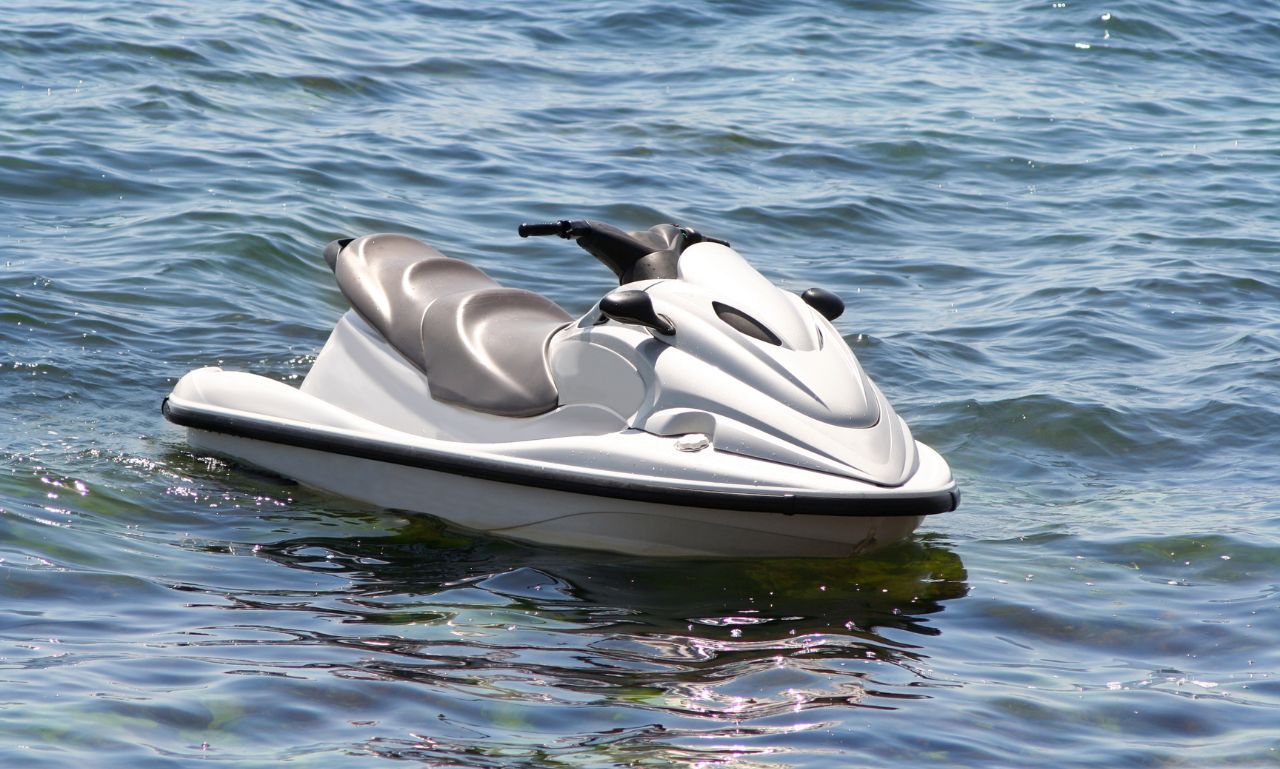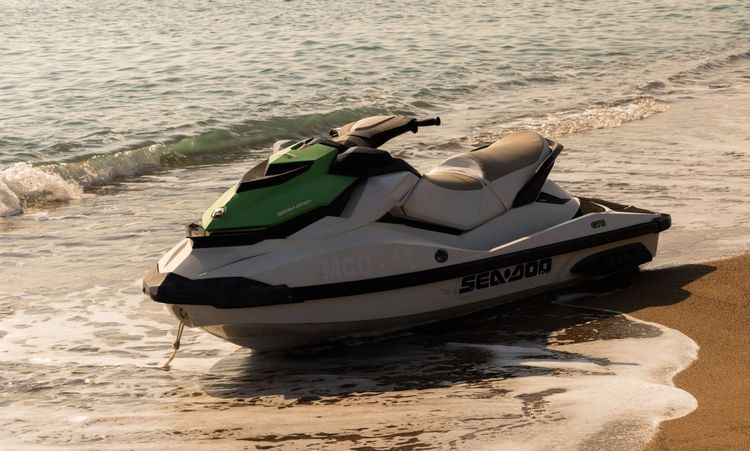Owning a jet ski is an exciting experience, but understanding its lifespan is crucial for making the most of your investment. A common question among water sports enthusiasts is, "How many hours do jet skis last?" Let us look at the lifespan of jet skis, the factors affecting their longevity, and essential tips for extending their lifespan. We'll also address frequently asked questions to help you maximise your time on the water.
What is the Lifespan of a Jet Ski?

Most jet skis last between 300 and 500 hours with proper care. I've seen top brands like Yamaha and Sea-Doo push past 700 hours. But here's the truth: hours alone don't tell the whole story.
A 500-hour jet ski with perfect maintenance records might outperform a neglected 200-hour machine. It's like comparing a well-maintained car to one that's missed every oil change. Smart maintenance makes all the difference.
Modern 4-stroke engines have completely changed the game. They last longer than older 2-stroke models, need less maintenance, and use fuel more efficiently. The technology keeps improving with each model year.
Factors Affecting the Lifespan of a Jet Ski
Age
Modern jet skis have advanced monitoring systems that warn you about problems before they become expensive to repair, thus preventing catastrophic failures.
For instance, comparing two similar models from different years shows different results. A recent model can have better seals, improved cooling, and more innovative electronics than previous models. These minor improvements add up to a longer life.
The age factor matters most with 2-stroke engines. Older models typically wear out faster and cost more to maintain as parts become more challenging to find. However, some older machines still perform well today.
Brand
Brand choice impacts longevity more than most people realise. Yamaha, Sea-Doo, and Kawasaki lead the pack because they've spent decades perfecting their designs. Yamaha's corrosion protection works exceptionally well in coastal areas. Meanwhile, Sea-Doo machines often excel in freshwater settings, and Kawasaki offers excellent overall durability.
Each manufacturer approaches design differently. Some focus on performance, others on reliability. Understanding these differences helps match your needs. Research specific model histories before buying.
Rider's Attitude
Your riding style directly affects your jet ski's life expectancy. Aggressive riders who constantly push the limits face more repairs. The machine simply wasn't built for constant maximum stress. Moderation extends lifespan.
Think of it like running a marathon versus sprinting. Distance runners last longer than sprinters. The same principle applies to jet ski engines. Consistent, moderate use proves best for longevity.
The break-in period proves especially important. Those first 10 hours set the tone for your engine's entire life. Follow the manual's guidelines carefully during this time. Many owners rush this crucial period.
I've seen countless examples of riding style impact. Two identical machines, different riders, vastly different outcomes. Gentle riders often see double the engine life. Your throttle hand controls your maintenance costs.
Features
Extra features can affect longevity in surprising ways. More features mean more things that could potentially break. But they also help protect the engine. Modern systems offer both benefits and challenges.
Modern electronic throttle controls prevent over-revving, advanced cooling systems prevent overheating, and variable trim systems reduce strain during acceleration. These features protect vital components.
However, these systems need proper maintenance too. Regular software updates keep everything running smoothly. Skip these, and you might face unexpected issues. Technology requires attention.
Consider which features genuinely benefit you. Some riders never use advanced systems. Others rely on them heavily. Choose features that match your riding style and maintenance commitment.
Usage Environment
Where you ride matters as much as how you ride, salt water creates unique challenges. It corrodes metal parts faster than fresh water. Environmental factors influence maintenance needs.
Rough water puts extra stress on the hull and engine mounts. Calm lake riding typically causes less wear. Sand and debris can damage internal components. Location determines maintenance requirements. Skipping post-ride freshwater flushes can lead to expensive repairs.
Temperature changes affect performance and wear. Hot climates stress cooling systems, and cold weather creates different challenges. Adapt maintenance to your local conditions.
How to Prolong the Lifespan of Your Jet Ski
Regular Maintenance

- Change the oil every 50 hours or annually.
- Replace worn items before they fail. Prevention beats repairs.
- Track everything from oil changes to minor repairs. This history helps identify patterns and prevent significant problems. Documentation proves valuable.
- Find a trusted mechanic who knows your model. Good mechanics spot potential issues early. They save you money in the long run. Build a relationship with qualified professionals.
- Learn basic maintenance tasks yourself. Start with oil changes and basic inspections. Gradually build your maintenance skills.
Proper Storage
- Use a quality cover that fits correctly.
- Store your jet ski away from direct sunlight when possible.
Winterisation matters even in mild climates. Proper fuel stabilisation prevents carburettor issues, and battery maintenance ensures reliable starting in spring. I've seen poor storage destroy otherwise good machines. UV rays damage seats and handles, and moisture leads to corrosion.
Consider climate-controlled options where available. Extreme temperatures affect components, and proper ventilation prevents mould growth. Location influences storage needs.
Responsible Use
- Warm up your engine correctly before riding.
- Cool down before shutting off after high-speed runs. Follow proper procedures.
- Watch your RPM ranges carefully. Most engines don't need full throttle to have fun, and moderate speeds often provide the best experience anyway.
- Learn to read your jet ski's warning signs. Unusual sounds need investigation, and performance changes might indicate developing problems.
- Pay attention to your machine.
- Share maintenance knowledge with other riders, join owner groups, learn from other's experiences, and build a support network for better maintenance.
Do jet skis take a lot of maintenance?
Jet skis need regular but manageable maintenance. Basic service takes 2-3 hours every few months. Annual maintenance might require 4-6 hours total. Plan accordingly.
Budget between $400 and $800 annually for maintenance. DIY work can reduce these costs. However, some tasks require professional help. Factor maintenance into ownership costs. Regular oil changes prevent engine damage, and fresh fuel prevents carburettor problems. Maintain systems before they fail. Track maintenance expenses carefully, as this helps to budget future costs and reveals potential issues early.
Is 500 hours a lot on a jet ski?
500 hours represents significant use, and well-maintained machines still perform well at this point. However, expect some parts to need attention, and inspection becomes crucial. I recently evaluated a 500-hour Yamaha WaveRunner. The owner's maintenance records showed consistent care, and the machine ran perfectly. Documentation proved valuable.
When buying a high-hour jet ski, check compression numbers, look for service records, and test rides before purchasing. Professional inspection helps avoid problems. Some owners prefer lower-hour machines, while others see value in proven reliability. When evaluating, consider usage patterns and check maintenance history carefully.
How long can a jet ski go on a full tank?

Most modern jet skis run for 5-6 hours under normal conditions. Aggressive riding cuts this to 2-3 hours. Fuel efficiency varies by model and riding style, so plan trips carefully. Carry extra fuel for long rides, know your machine's range limits, and plan fuel stops for longer trips. Safety requires good planning.
Weather conditions affect fuel consumption. Rough water increases fuel use, and headwinds significantly reduce efficiency. Monitor conditions carefully. Track your typical fuel usage to help you plan future rides. Different conditions require different planning, and experience improves trip preparation.
Conclusion
A jet ski's lifespan depends mainly on you. Regular maintenance and responsible use matter most. Modern machines regularly exceed 300-500 hours with proper care. Make informed choices. Choose your model based on the intended use. Invest in proper maintenance. The rewards of good care show in extended service life. Enjoy responsible ownership.
Also Read: How Much to Replumb a House?




